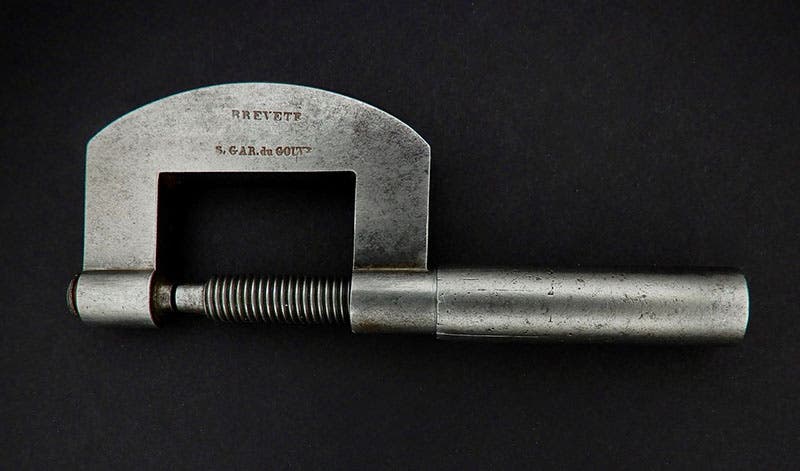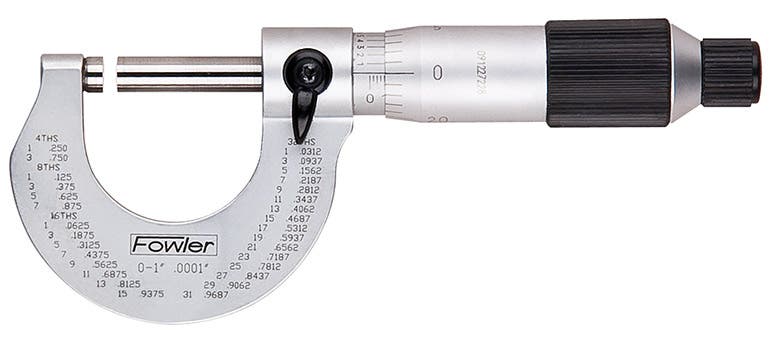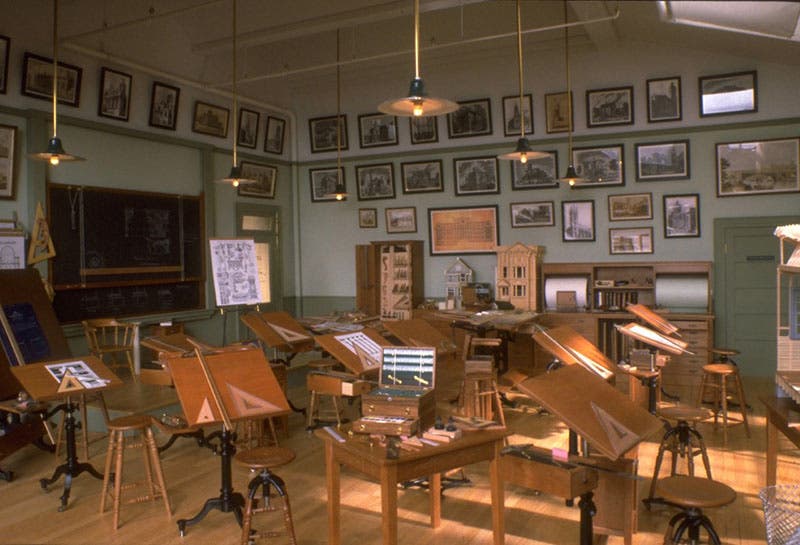Scientist of the Day - Jean-Laurent Palmer
Jean-Laurent Palmer, a French metal worker and instrument maker, was born Feb. 10, 1811. Palmer ran a workshop in Paris that produced drawn wire and seamless metal tubes, and he apparently needed an instrument to measure wire diameter and the thickness of sheet stock and tube walls. In 1848, he produced the instrument illustrated in our first image: a screw micrometer. The idea for a micrometer – an instrument that measures distance or thickness by counting the turns of a screw – was 180 years old, and calipers were far older, but no one had ever combined the two into a single hand-held tool. Palmer's micrometer had two numerical scales--one to count the screw turns, and another to measure fractions of a turn. Since the threads were 1 mm apart, and since the fractional scale was divided into 20 parts, that means Palmers' instrument could measure thickness to an accuracy of .05 mm, and with a Vernier scale that could be reduced to .01 mm – one hundred-thousandth of a meter. Impressive for such a simple instrument.
Palmer received a patent for his device in 1848. It is instructive to look at a modern micrometer (third image) and compare it to Palmer’s original instrument; 170 years of refinements have left the basic design unchanged. Seldom has an instrument sprung more fully formed from the head of Zeus or whoever is the god of instrument-making. Palmer got almost everything correct, right from the get-go. Versions of his micrometer, or “Palmer” as the French still call it, were used in and around Paris until 1867, when one was spotted by an American company at a French trade show and put into mass production in the United States, with Palmer, unfortunately, disappearing from the historical picture until fairly recently.
There are not many original Palmers around – original in that they were made by Palmer’s company shortly after 1848. But one of them is right here in Kansas City, in the collection of Bill Robertson, miniaturist extraordinaire and a good friend of the History of Science Collection at the Linda Hall Library (first two images). Bill was so thrilled when he bagged a Palmer ten years ago that he posted an extremely informative discussion of Palmer the man and Palmer the micrometer on a website that caters to collectors of antique measuring instruments: Practical Machinist. Bill’s initial post (Bill’s username is rivett608 on this website) resulted in a total of 75 responses that brought together more information on Jean-Laurent Palmer (such as his birth date, thankfully) than had ever before been assembled. One of the respondents described a Palmer micrometer as “the Holy Grail of collectors of antique machinist measuring tools.” I do not know what you do next, once you have the Holy Grail on a shelf in your workshop. Make a miniature Palmer, perhaps?
You may learn more about Bill Robertson as miniaturist on his website. Be sure to click on the “Gallery” tab. We show a photo of one of his creations, an architect’s classroom (image just above), at 1/12th scale It is on permanent display at the National Museum of Toys and Miniatures here in Kansas City.
And where will Bill put that miniature Palmer when he makes it? Perhaps in the machinist’s tool chest he has already crafted, at 1/8th scale (image just above). It looks like there is room for one more tool.
Dr. William B. Ashworth, Jr., Consultant for the History of Science, Linda Hall Library and Associate Professor emeritus, Department of History, University of Missouri-Kansas City. Comments or corrections are welcome; please direct to ashworthw@umkc.edu.










